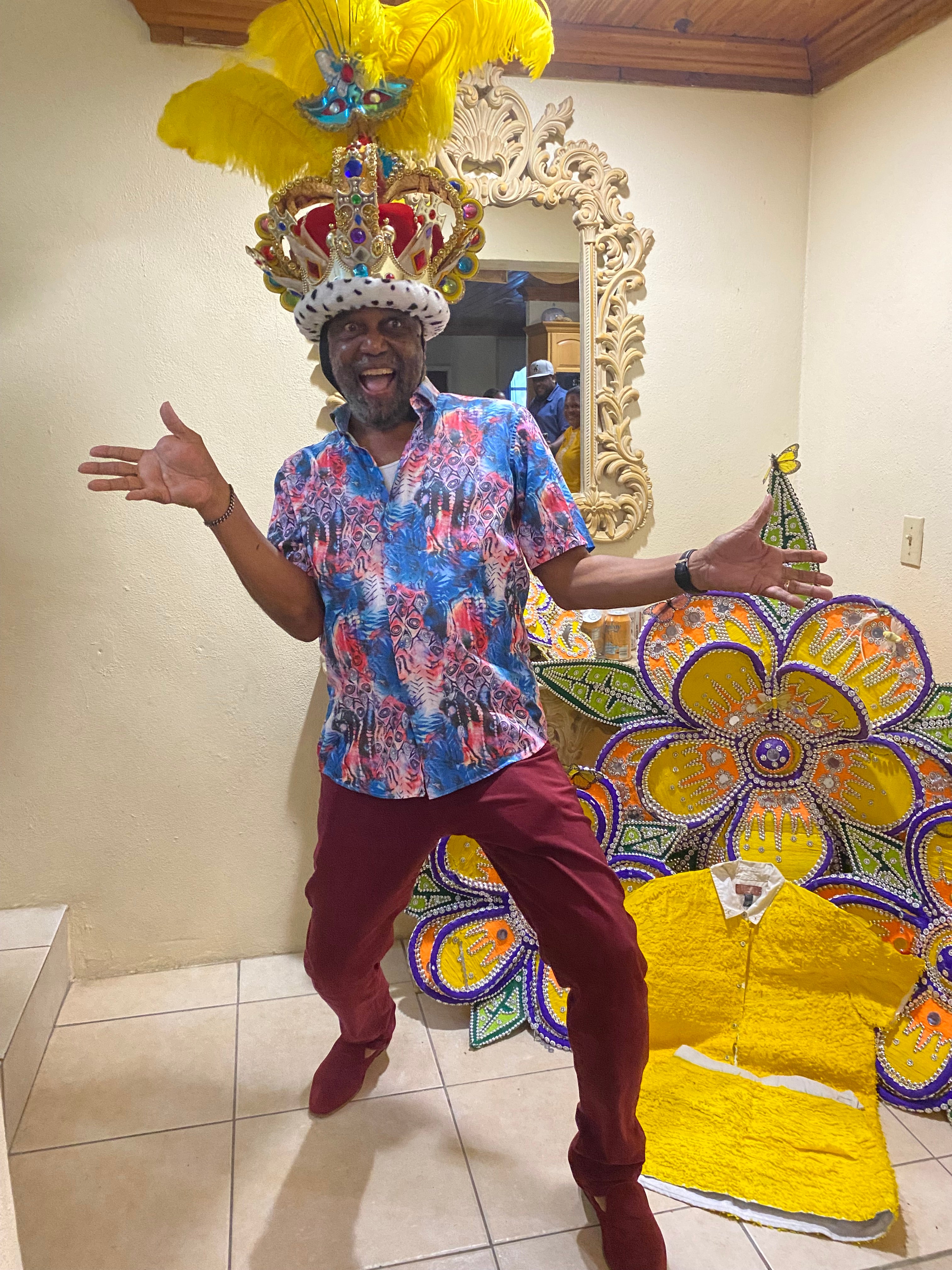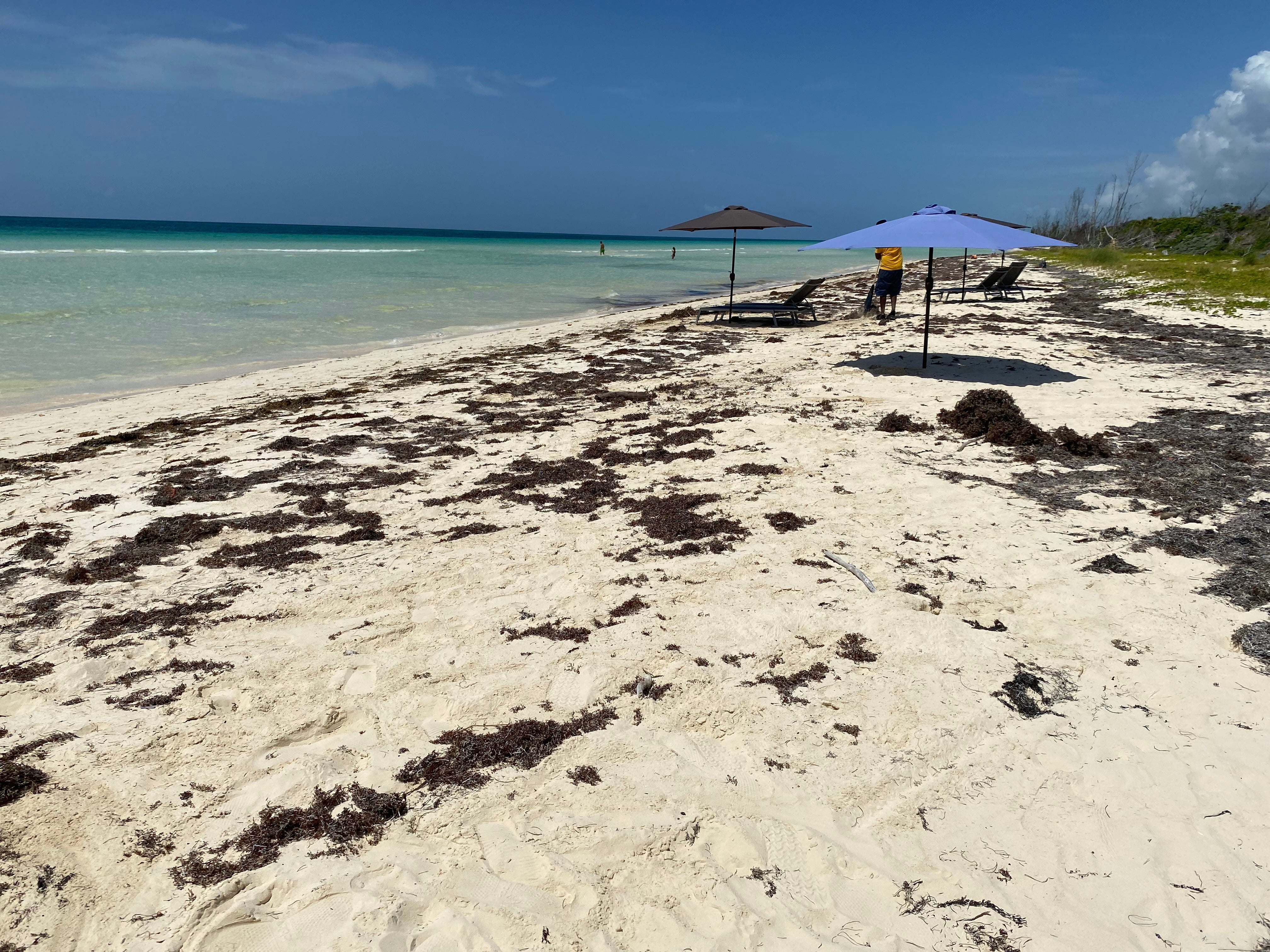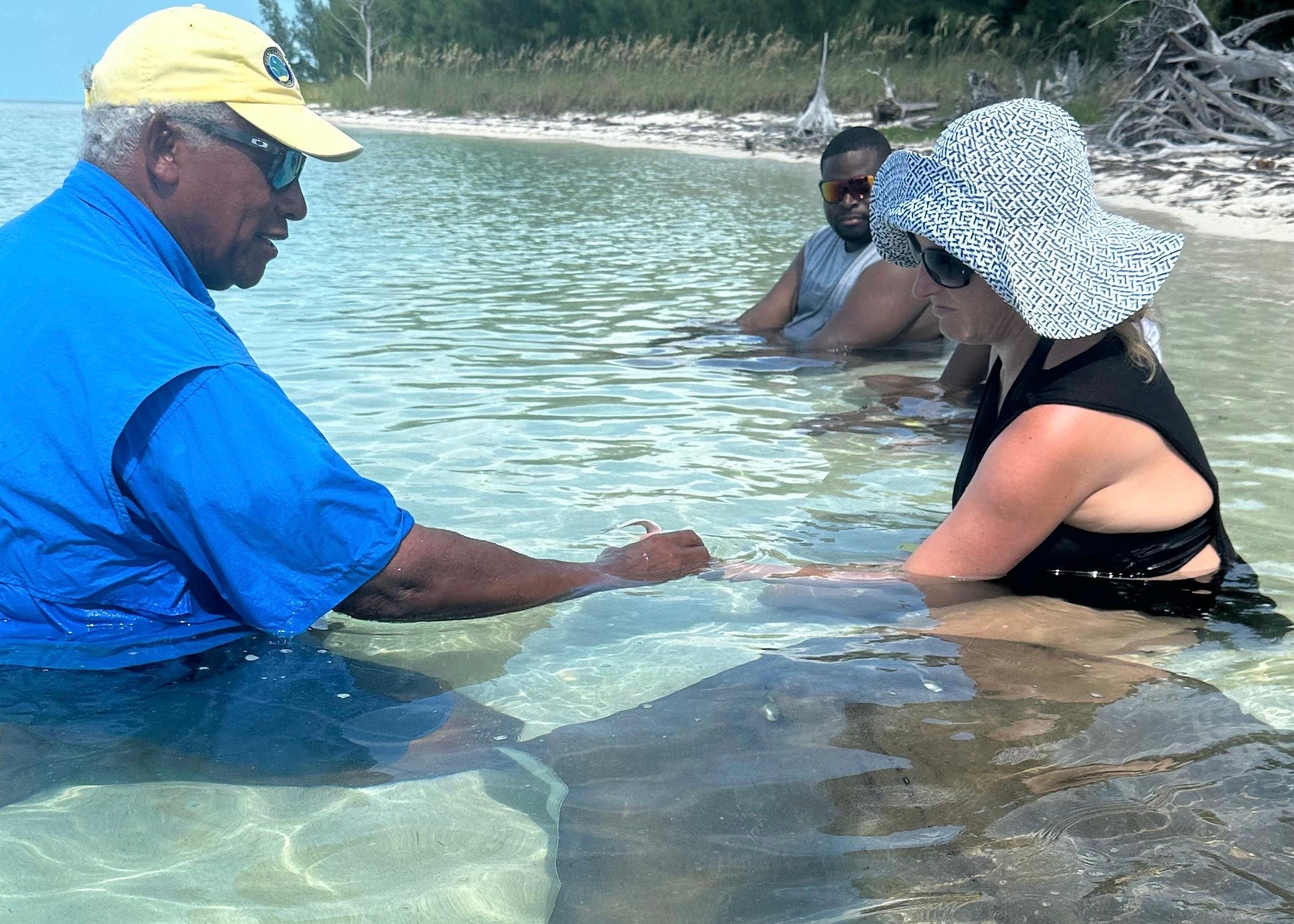This website uses cookies so that we can provide you with the best user experience possible. Cookie information is stored in your browser and performs functions such as recognising you when you return to our website and helping our team to understand which sections of the website you find most interesting and useful.
Support truly
independent journalism
Our mission is to deliver unbiased, fact-based reporting that holds power to account and exposes the truth.
Whether $5 or $50, every contribution counts.
Support us to deliver journalism without an agenda.

Louise Thomas
Editor
In the sparkling turquoise sea of a small paradise cay, a pink and brown snout emerges. Twitching, it is following the scent of carrots held out nervously by my fellow intrepid explorers, stood waist-deep in the balmy clear waters of the Exuma archipelago.
The large brown spotted pig ‘swims’ towards us, powered by his hooves, his head held just above the water. I wince and wait to be bitten, but he gently snuffles up the vegetable from my hand, paddles off to shore and gobbles it down. A couple of the group quickly leave on account of the floating pig poos, but I surmise we’re in salt water. It’ll be fine.
Swimming pigs (yes, that is correct) are not native to the Bahamas at all and are thought to have been left on a neighbouring Exuma cay (known as Pig Island) by sailors – presumably to go back and eat them. Or maybe a farmer just gave up. No-one is quite sure. They have now ‘moved in’, populate several cays (islands) and have become something of a national treasure.

But it should come as no surprise that kind-hearted Bahamians have welcomed these relative newcomers.
Here are six more ways to get to the heart and soul of this island nation.
Read more on Caribbean travel:
Getting to know the locals
An air-traffic controller by day, who also owns a chartered boating business for tourists, Kwame Russell is a people-to-people scheme ambassador. This programme matches curious visitors with volunteer locals according to their occupation, hobbies and passions. The idea is for tourists to have a fully immersive cultural experience, themed around culinary, natural or historical interests.
A typical activity is to dine with an ambassador and their friends, and during my visit, I am treated to Bahamian classics of conch (sea snail) fritters, potato salad, peas and rice (not rice and peas) and macaroni cheese.
Elaborate Junkanoo costumes and headdresses are proudly displayed. Fellow guest Percy ‘Vola’ Francis, the ‘King of Junkanoo’, explains how this annual Boxing Day and New Year’s Day street carnival originated from slaves, who were given three days off at Christmas and would go house-to-house singing and dancing with colourful masks.
Learning about Junkanoo

It becomes clear Junkanoo is at the very soul of Bahamian culture, including impressive resourcefulness. At Bahamas Museum of Junkanoo we learn the intricate outfits were originally made from any objects that could be recycled, from sea sponges to cereal boxes.
Nowadays, a new costume is created each year, starting with cardboard (donated by hotels and businesses) which are painstakingly decorated over many months with colourful crepe paper strips, jewels and feathers. The most detailed ensembles can cost upwards of 25,000 dollars. Junkanoo groups get some sponsorship, but many Bahamians fund themselves.
Witnessing the wildlife

We are taken by Exuma Powerboat Adventures to the tip of the Exuma cays for a shark-feeding encounter. The ‘docile’ nurse sharks are fed fish on a rope. There is some dramatic thrashing about, though apparently these suction feeders are pretty ‘harmless’ (even if they can suck an entire Queen Conch from its shell).
For a human, getting conches out of their horny pink shells involves a hammer, a blunt knife, and then a mighty yank. We are given a demo. The alien-like creature that emerges is still alive, complete with entrails, ‘claws’ and ‘eyes’. Eaten raw with diced peppers, onions and lime, it forms the Bahamian signature dish, conch salad.
Attending the Goombay Summer Festival

The annual island-wide Goombay Summer Festival showcases the rich heritage of the Bahamas, and is held every Thursday in July.
Traditional street food and strong rum cocktails (no measures are ever used so they all taste slightly different) are sold from stalls lining Bay Street. The vibrant concert showcases unique Goombay calypso music, featuring the Rhythm Band who accompany a line-up of famous local singers belting out favourite songs for the swelling crowd to sing along.
When I attend, a musician with Olympian levels of endurance scrapes a carpenter’s saw with a metal brush for three hours. This makeshift instrument is a key part of the Bahamian sound.
The last act is a Junkanoo ‘mini-parade’, the troop dressed in their exquisite outfits with music played on cow bells, pig skin drums and tubers.
Exploring national parks
On Grand Bahama, a 30-minute flight away, I find out why mangrove ecosystems are fundamental to protecting these Caribbean islands from increasingly extreme hurricanes.
It is on the drive from Freeport to the Lucayan National Park that I see the devastation caused by Hurricane Dorian in 2019, which destroyed a huge pine forest – now reduced to mile upon mile of stark blackened trunks where the trees were either snapped in half by the 180mph winds, or poisoned by the unprecedented salt water surge.
The heavenly Gold Rock Beach, with dreamy shallow waters stretching hundreds of yards, is reached via a raised walkway over mangroves that are being replanted to calm the waves when they come.
At the nearby award-winning Coral Vita project, scientists grow coral on land before transplanting them in the sea to re-establish fragile reefs, lost through overfishing, pollution and climate change. I am shown the canape-sized specimens being grown in tanks and artificially acclimatised to harsher conditions to build their resilience.

Swimming with stingrays
My final adventure is meeting Keith ‘stingray whisperer’ Cooper who runs West End Ecology Tours. I join a group on his small boat which soars out over water so blue and green, it could be from a painting or another world.
We are taken to Sandy Cay, where Keith’s beloved stingrays live. He pulls a pilchard from his breast pocket and within moments, ‘Hugger’ arrives (Keith has given all the stingrays names). She heads straight for him and pushes herself onto his chest so she can be fed (her mouth is on the underside of her body). Hugger stays there, jumping from the water for kisses with Keith.

Then it’s our turn. Keith says not to worry about being nipped (which I really don’t fancy) or about the lemon sharks swimming nearby who are ‘nothing to be scared of’.
I gingerly hold a small fish on the water’s surface, while Hugger glides over and sucks it from my fingers. She feels silky smooth and the longer we spend there, the more friendly she becomes, nudging against us and tickling our legs. After an hour or so, we are joined by another six stingrays. We don snorkels for selfie videos with them – holding onto Keith, while they swim beneath and over us for the camera.
How to do it
Doubles at the British Colonial Hilton Nassau, New Providence, start from $180 (£139), room only. Doubles at Lighthouse Pointe start from $182 (£140) per night, all-inclusive. For information on the destination, visit bahamas.com.
Read more: The most affordable destinations in the Caribbean



 Africana55 Radio
Africana55 Radio 
